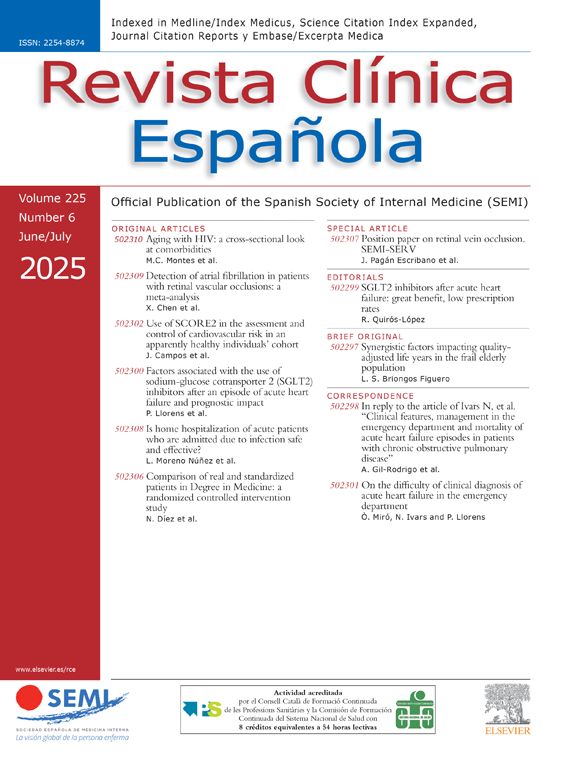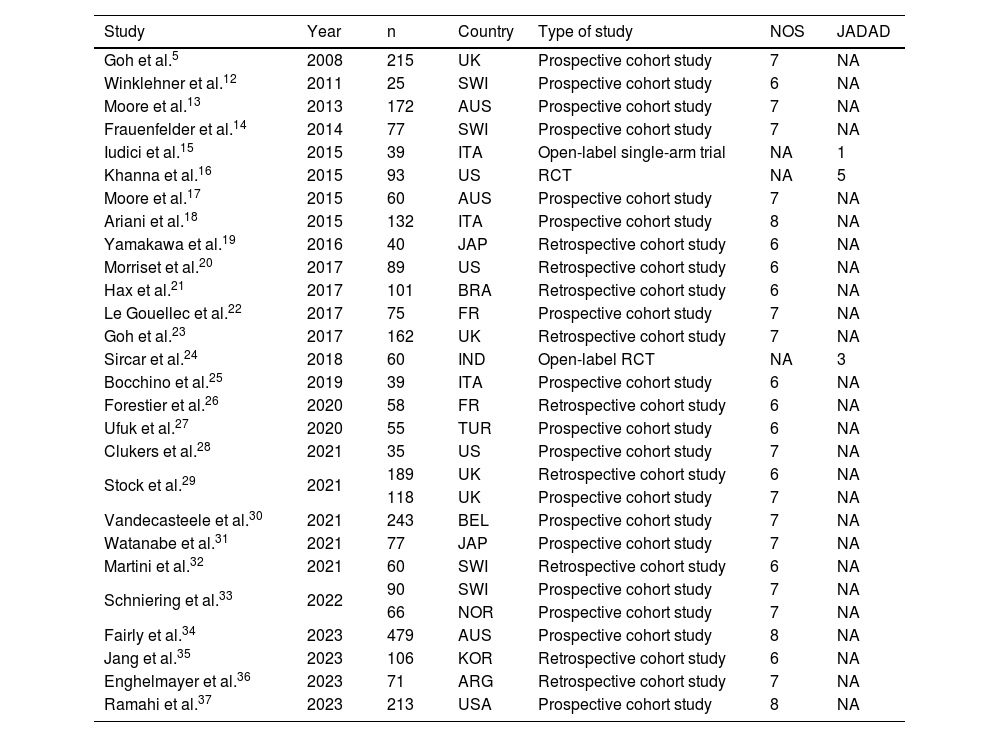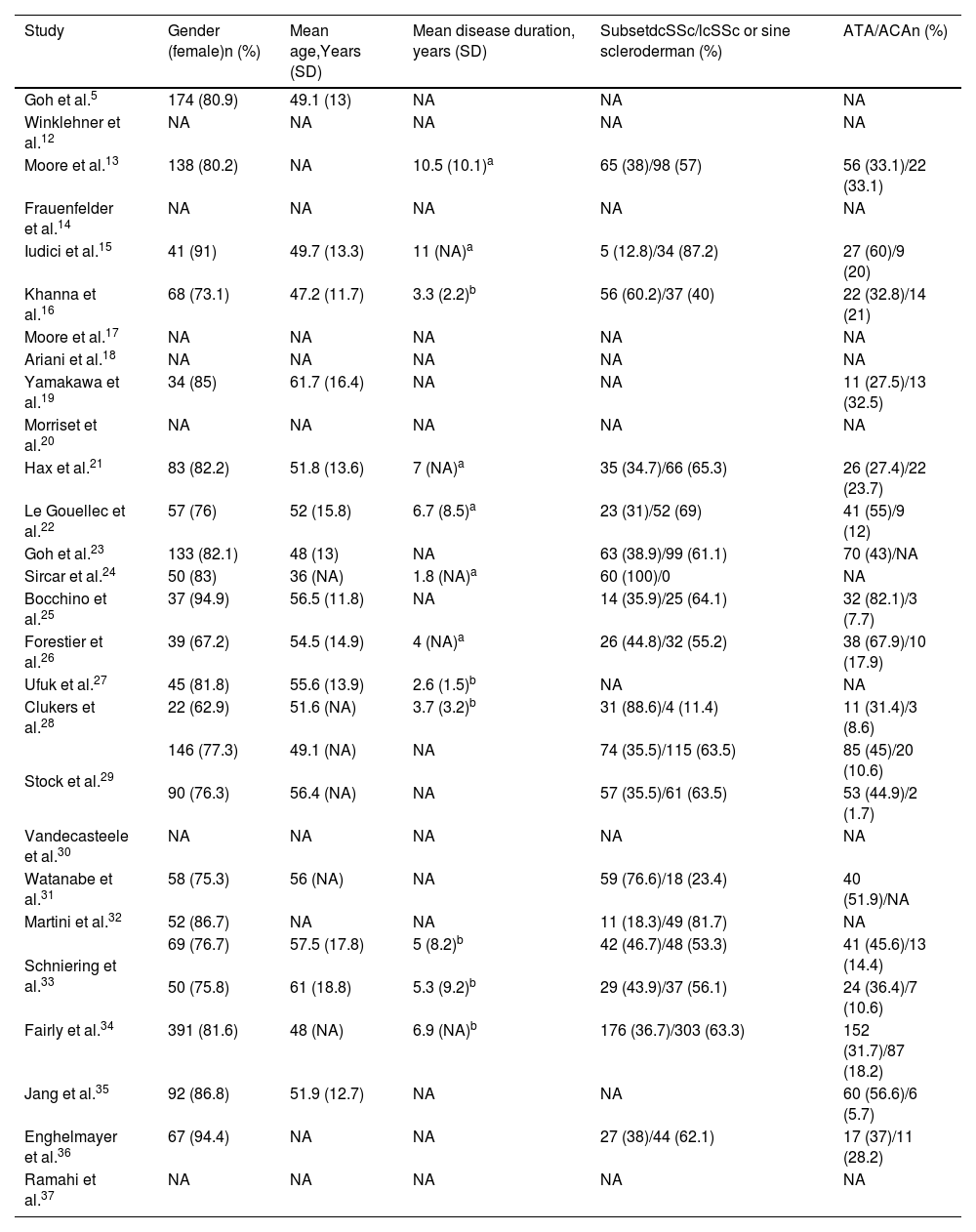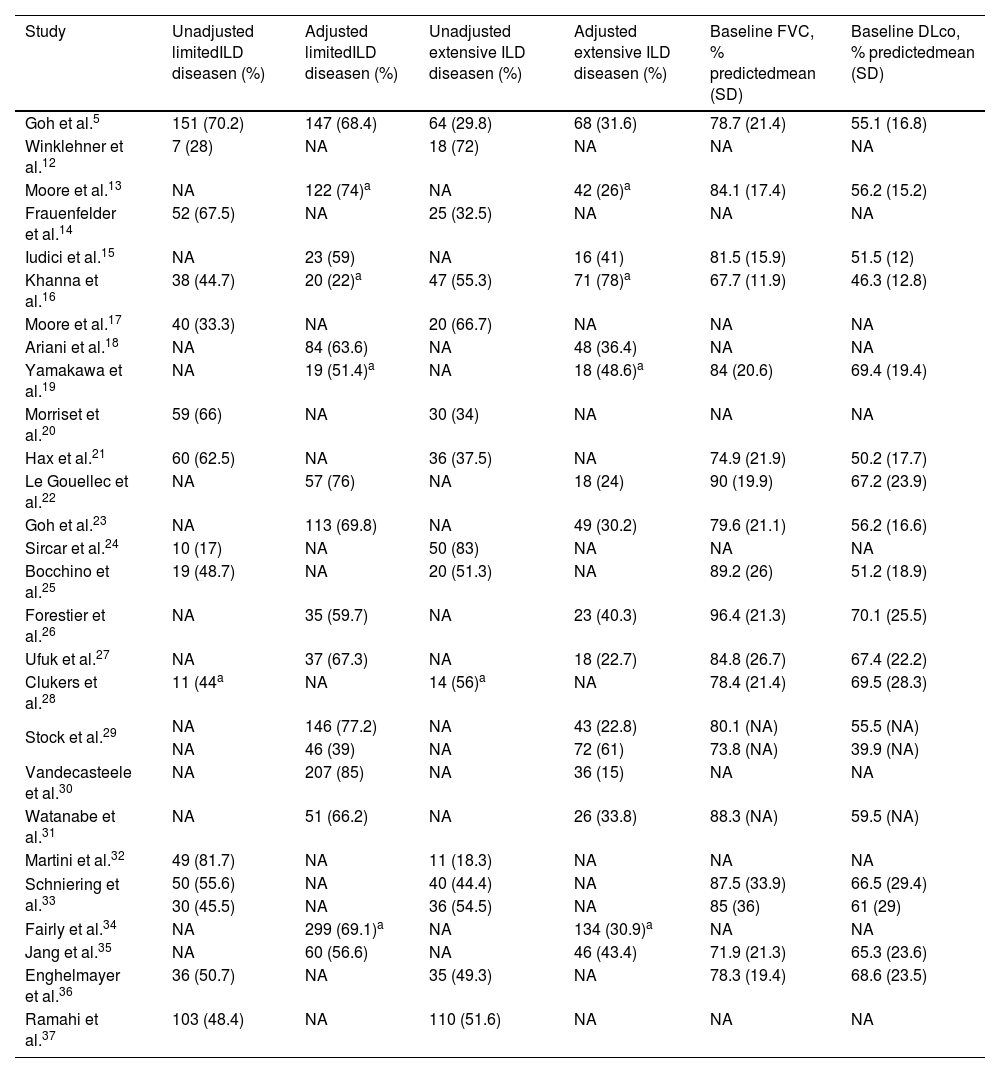Goh et al. proposed in 2008 a classificatory algorithm of limited or extensive SSc-ILD. The prevalence of both at the time of diagnosis of SSc-ILD is not known with exactitude.
MethodsThe review was undertaken by means of MEDLINE and SCOPUS from 2008 to 2023 and using the terms: "systemic", "scleroderma" or "interstitial lung disease" [MesH]. The Newcastle-Ottawa Scale was used for the qualifying assessment for observational studies and the Jadad scale for clinical trials. The inverse variance-weighted method was performed.
ResultsTwenty-seven studies were initially included in the systematic review and meta-analysis (SRMA). Of these, 17 studies had no overlapping data. They reported data from 2,149 patients, 1,369 (81.2%) were female. The mean age was 52.4 (SD 6.6) years. 45.2% of the patients had the diffuse subtype and 54.8% had the limited or sine scleroderma subtype. A total of 38.7% of the patients showed positive antitopoisomerase antibodies (ATA) and 14.2% positive anticentromere antibodies (ACA). The mean percentage of forced vital capacity (FVC) at baseline was 80.5% (SD 6.9) and of diffusing capacity of the lungs for carbon monoxide (DLco) was 59.1% (SD 9.6). Twelve studies presented SSc-ILD extension data adjusted for PFTs and were included in the meta-analysis. The 10 observational cohort studies were analyzed separately. The overall percentage of limited extension was estimated at 63.5% (95%CI 55.3–73; p < 0.001) using the random-effects model. Heterogeneity between studies (I2) was 9.8% (95%CI 0–68.2%) with the random-effects model. Extensive pulmonary involvement was estimated at 34.3% (95%CI 26–45.4; p < 0.001). Heterogeneity between studies (I2) was 0% (95%CI 0–61.6%) with the random-effects model.
ConclusionThe overall percentage of limited SSc-ILD at the time of diagnosis of SSc-ILD was estimated at 63.5% and extensive at 34.3%.
Goh et al. propusieron en 2008 un algoritmo clasificatorio de SSc-EPID limitada o extensa. La prevalencia de ambos en el momento del diagnóstico de SSc-EPID no se conoce con exactitud.
MétodosLa revisión se realizó mediante MEDLINE y SCOPUS desde 2008 hasta 2023 y utilizando los términos: "sistémica", "esclerodermia" o "enfermedad pulmonar intersticial" [MesH]. Se utilizó la escala de Newcastle-Ottawa para la evaluación de la calificación de los estudios observacionales y la escala de Jadad para los ensayos clínicos. Se realizó el método inverso ponderado por la varianza.
ResultadosSe incluyeron inicialmente 27 estudios en la revisión sistemática y metaanálisis (SRMA). De ellos, 17 estudios no tenían datos coincidentes. Comunicaron datos de 2.149 pacientes, 1.369 (81,2%) eran mujeres. La edad media era de 52,4 (DE 6,6) años. El 45,2% de los pacientes presentaban el subtipo difuso y el 54,8% el subtipo limitado o esclerodermia sinusal. El 38,7% de los pacientes presentaban anticuerpos antitopoisomerasa (ATA) positivos y el 14,2% anticuerpos anticentrómero (ACA) positivos. El porcentaje medio de capacidad vital forzada (FVC) al inicio del estudio fue del 80,5% (DE 6,9) y de capacidad de difusión pulmonar para el monóxido de carbono (DLco) fue del 59,1% (DE 9,6). Doce estudios presentaron datos de extensión de SSc-EPID ajustados por PFR y se incluyeron en el metaanálisis. Los 10 estudios observacionales de cohortes se analizaron por separado. El porcentaje global de afectación limitada se estimó en un 63,5% (IC 95%: 55,3–73; p < 0,001) utilizando el modelo de efectos aleatorios. La heterogeneidad entre estudios (I2) fue del 9,8% (IC95% 0–68,2%). La afectación pulmonar extensa se estimó en 34,3% (IC 95%: 26–45,4; p < 0,001). La heterogeneidad entre estudios (I2) fue del 0% (IC 95%: 0–61,6%) con el modelo de efectos aleatorios.
ConclusionesEl porcentaje global de SSc-EPID limitada en el momento del diagnóstico de SSc-EPID se estimó en un 63.5% y extensa en un 34.3%.
Article
Diríjase desde aquí a la web de la >>>FESEMI<<< e inicie sesión mediante el formulario que se encuentra en la barra superior, pulsando sobre el candado.
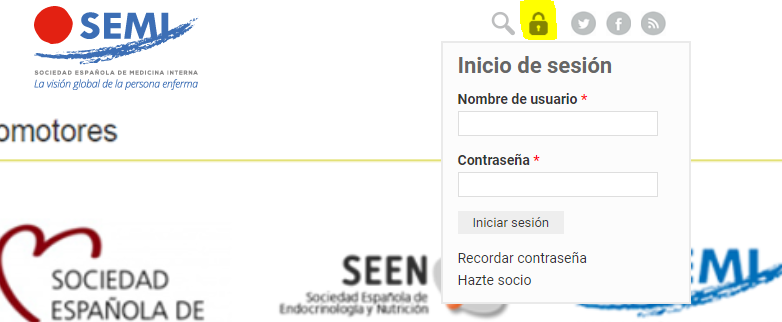
Una vez autentificado, en la misma web de FESEMI, en el menú superior, elija la opción deseada.
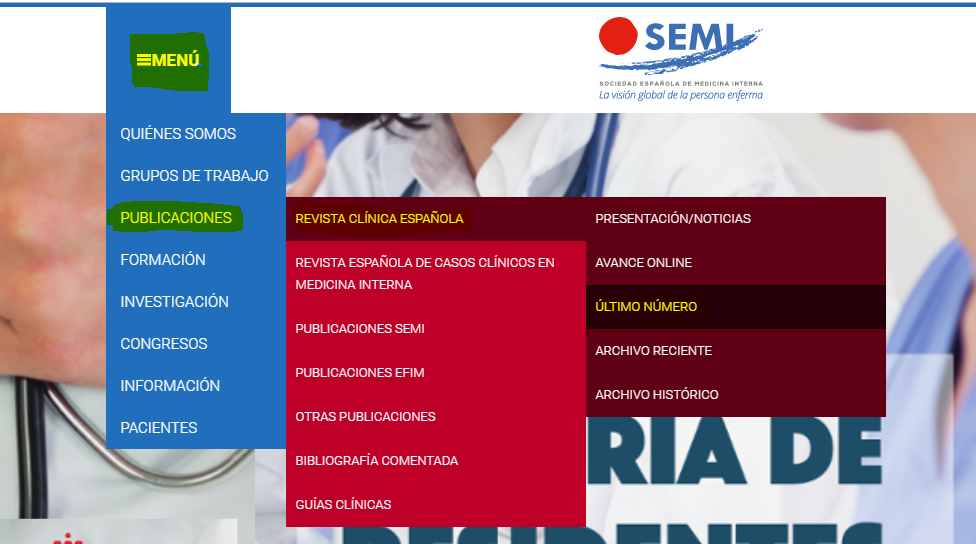
>>>FESEMI<<<

